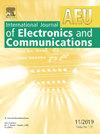TFCED: A novel smart primary user emulation attack detection for cognitive radio sensor networks
IF 3.2
3区 计算机科学
Q2 ENGINEERING, ELECTRICAL & ELECTRONIC
Aeu-International Journal of Electronics and Communications
Pub Date : 2025-08-14
DOI:10.1016/j.aeue.2025.155959
引用次数: 0
Abstract
The integration of dynamic spectrum access within wireless sensor networks is driving a fundamental evolution towards Cognitive Radio Sensor Network (CRSN) architectures, a pivotal component of next-generation communication infrastructures. Nevertheless, vulnerabilities at the physical layer, notably Spectrum Sensing Data Falsification (SSDF) and Primary User Emulation Attacks (PUEA), introduce significant challenges to reliable spectrum utilization in CRSN environments. This study introduces a novel methodology, termed Time–Frequency-Correlation-based Emulator Detection (TFCED), specifically engineered to counteract PUEA-related security breaches within CRSN deployments. TFCED operates by leveraging the inherent temporal and spectral signatures of both legitimate primary users and smart PUEA emitters, thereby achieving enhanced discriminatory capabilities. By refining the precision of PUEA signal identification, the proposed TFCED framework demonstrably extends network operational lifespan. Empirical evaluations reveal that, in comparison to contemporary CRSN security paradigms, TFCED achieves a notable augmentation in sensing accuracy, approximately 9% (95% CI: 0.946%–0.960%, p 0.0001), and a substantial reduction in error rates, around 23% (95% CI: 0.0929%–0.1071%, p 0.0001). To corroborate these findings, a practical validation employing a Software Defined Radio (SDR) platform was conducted, substantiating the efficacy of the proposed system architecture.
一种新的认知无线电传感器网络智能主用户仿真攻击检测方法
无线传感器网络中动态频谱接入的集成正在推动认知无线电传感器网络(CRSN)架构的基本演变,这是下一代通信基础设施的关键组成部分。然而,物理层的漏洞,特别是频谱感知数据伪造(SSDF)和主用户仿真攻击(PUEA),给CRSN环境中的可靠频谱利用带来了重大挑战。本研究介绍了一种新的方法,称为基于时频相关的仿真器检测(TFCED),专门用于在CRSN部署中抵消puea相关的安全漏洞。TFCED通过利用合法主用户和智能PUEA发射器固有的时间和频谱特征来运行,从而实现增强的识别能力。通过提高PUEA信号识别的精度,所提出的TFCED框架明显延长了网络的使用寿命。实证评估表明,与当代CRSN安全范式相比,TFCED在感知精度上实现了显着提高,约为9% (95% CI: 0.946%-0.960%, p <;0.0001),错误率大幅降低,约为23% (95% CI: 0.0929%-0.1071%, p <;0.0001)。为了证实这些发现,采用软件定义无线电(SDR)平台进行了实际验证,证实了所提出的系统架构的有效性。
本文章由计算机程序翻译,如有差异,请以英文原文为准。
求助全文
约1分钟内获得全文
求助全文
来源期刊
CiteScore
6.90
自引率
18.80%
发文量
292
审稿时长
4.9 months
期刊介绍:
AEÜ is an international scientific journal which publishes both original works and invited tutorials. The journal''s scope covers all aspects of theory and design of circuits, systems and devices for electronics, signal processing, and communication, including:
signal and system theory, digital signal processing
network theory and circuit design
information theory, communication theory and techniques, modulation, source and channel coding
switching theory and techniques, communication protocols
optical communications
microwave theory and techniques, radar, sonar
antennas, wave propagation
AEÜ publishes full papers and letters with very short turn around time but a high standard review process. Review cycles are typically finished within twelve weeks by application of modern electronic communication facilities.

 求助内容:
求助内容: 应助结果提醒方式:
应助结果提醒方式:


